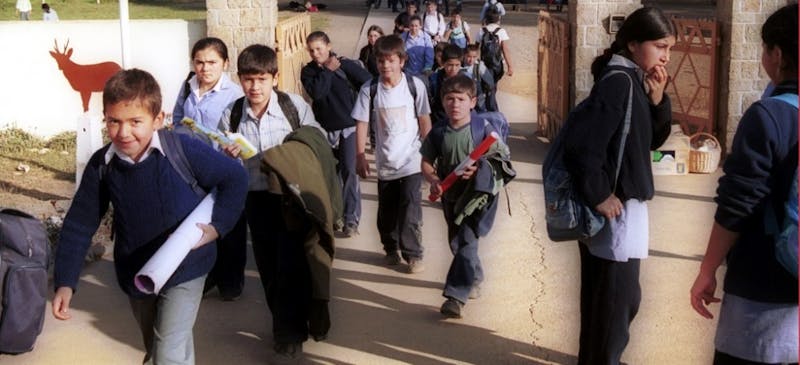NEWS
5/2/12 12:27pm
 By Evan Studenmund
By Evan Studenmund
The cueca and the rodeo, especially in combination, are about as Chilean as apple pie and milk are American. I learned that this Sunday in a small mountain town tucked away in the Andes, where I adventured with my study abroad program for one of the final legs of an awesome weekend-long adventure throughout the “fifth” region of Chile (there are 15 in total). The cueca is the national dance of Chile of a beautiful folk variety. Its implementation varies from region to region; in the Andes, the steps reflect the pride of the hauso, the skilled Chilean horsemen, and also are infused with a bit of Mapuche (native Chileans) flavor. Both dancers (male and female) wave a white handkerchief while they dance in a circular motion, periodically coming in towards one another, the man waving the handkerchief at the feet of the lady, fiercely tapping his boots equipped with stirrups against the dusty earth. The vibe of the dance is very festive, with the audience clapping along, as well as hooting and hollering. We witnessed two very young Chileans (I mean probably each with only 5 years of life experience) perform the cueca, with an incredible amount of poise, grace and execution.
From my understanding, in this line of Chilean folk tradition, the cueca would be danced after the rodeo, which is much less charming. Here are the components of a Chilean rodeo: a stone circle (with gates), two horses mounted by two hausos, and a cow. After a presentation of the hausos, the cow is released into the circle, and is promptly herded by the hausos and horses. One horse is adjacent to the cow, forcing it against the stone wall, and the other horse is behind the cow. The hausos pursue the cow around the circle in this formation, receiving points from the rodeo judge for keeping the cow moving and occasionally reversing direction. The cow is having no fun, as is evident by its numerous attempts to scale the 10 foot high walks. Then, after the cow has been run in a circle several times, the hausos focus on the fundamental goal of the rodeo; knocking the cow into the wall. Literally, this is the most critical part of the event, in terms of points for the hausos and “entertainment” for the spectators. At a certain spot in the wall (at this particular rodeo there was at least some straw padding there), the hauso adjacent to the cow attempts to turn his mighty horse into the cow at the right moment so that the cow is lifted off its feet and thrown into the wall. This is done at least two times--more if the cow is particularly stubborn. Each pair of hausos has two opportunities to complete this sequence, seeking to maximize their points. While I appreciated the cultural significance of the rodeo, I will not be looking to build a stone circle in my back yard anytime soon. I imagine the line of thought of the inventor of this sport to have been: I’m bored. Well, I’ve got some stones, two horses, and a cow. Let’s ram that darn cow into the wall!





